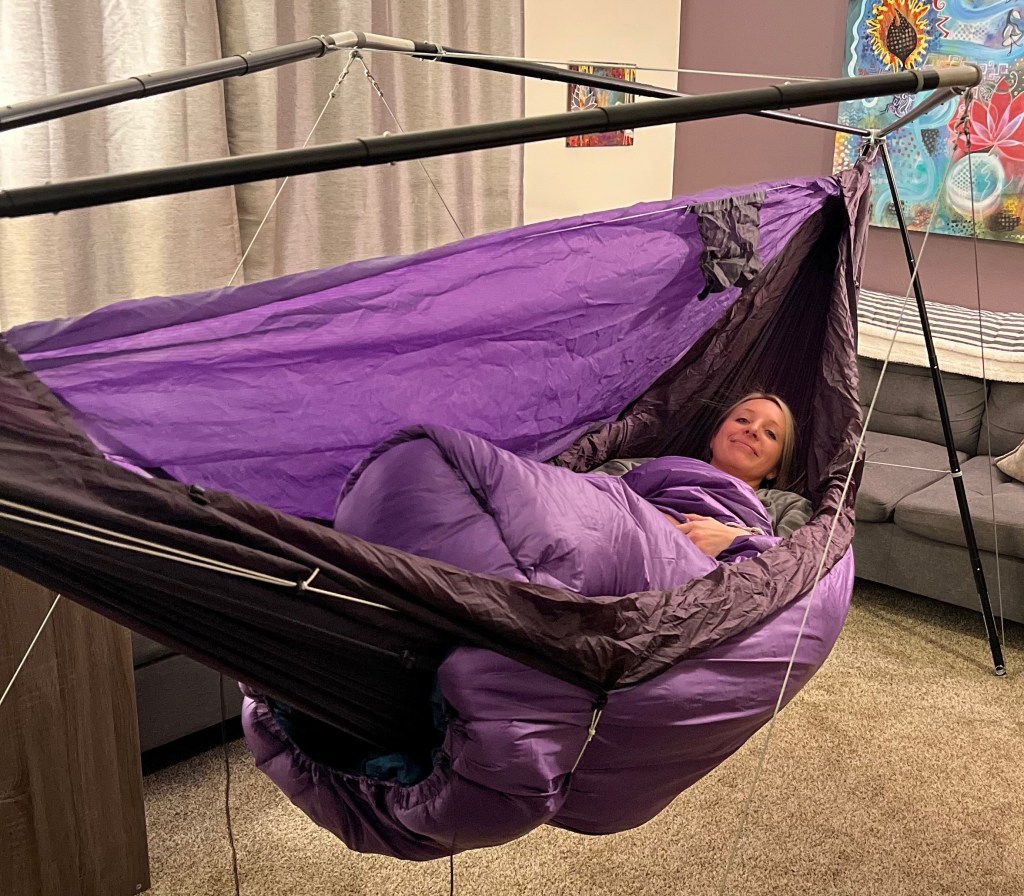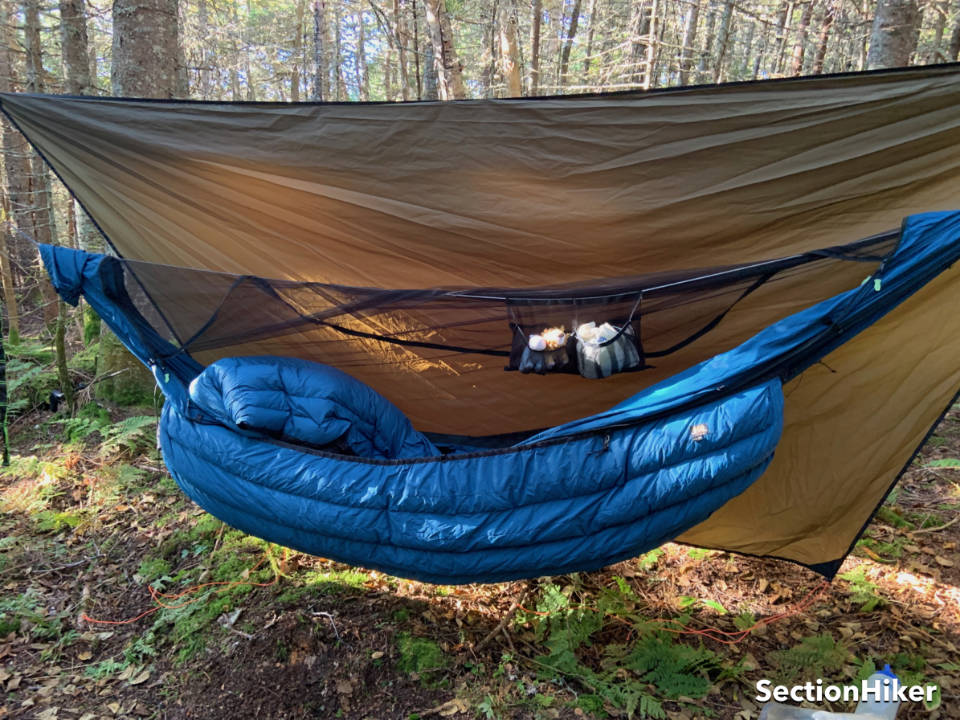Introduction: The Appeal of Hammock Sleeping
Sleeping in a hammock offers a unique and immersive sleeping experience that many find incredibly relaxing and rejuvenating. The gentle swaying motion, open-air environment, and close connection to nature can promote deep relaxation and restful sleep. However, mastering the art of hammock sleeping requires some knowledge and practice to ensure optimal comfort and support. In this article, we’ll explore the benefits of sleeping in a hammock and provide practical tips for achieving a comfortable and restful night’s sleep.

Understanding the Basics of Hammock Sleeping
Hammock sleeping involves lying diagonally across the hammock rather than parallel to its length. This diagonal position creates a flatter and more supportive surface, allowing your body to lie in a more natural and ergonomic position. It also reduces the risk of the hammock wrapping around you and creating discomfort or instability. Additionally, using a hammock with a proper sag—approximately 30 degrees—is crucial for achieving optimal comfort and support while sleeping.
Choosing the Right Hammock
Selecting the right hammock is essential for ensuring a comfortable sleeping experience. Look for a hammock made from durable and breathable materials such as nylon or parachute fabric, which provide both strength and ventilation. Consider the size and weight capacity of the hammock to ensure it can accommodate your body comfortably. Additionally, opt for a hammock with built-in features such as adjustable straps, mosquito netting, and rainfly attachments for added convenience and versatility.

Setting Up Your Sleeping Environment
Creating a conducive sleeping environment is key to achieving a comfortable and restful night’s sleep in a hammock. Choose a location with sturdy anchor points, such as trees or hammock stands, that are spaced appropriately to support the hammock without excessive sagging or stretching. Clear away any debris or obstacles from the area to minimize discomfort and ensure a smooth sleeping surface. Consider using a sleeping pad or underquilt to provide insulation and cushioning beneath you, especially in cooler temperatures.
Mastering the Art of Hammock Entry and Exit
Entering and exiting a hammock gracefully can take some practice, especially for beginners. To enter the hammock, sit down on the edge and lower yourself gently into a seated position. Then, swing your legs into the hammock and lie back diagonally, adjusting your position as needed to find optimal comfort. To exit the hammock, reverse the process by sitting up, swinging your legs out of the hammock, and standing up carefully. Avoid sudden movements or jerks, as these can destabilize the hammock and increase the risk of falls or injuries.
Finding Your Ideal Sleeping Position
Experimenting with different sleeping positions can help you find the most comfortable and supportive posture for sleeping in a hammock. Many people find that lying diagonally across the hammock with their head slightly elevated provides optimal spinal alignment and support. Others prefer to sleep on their side or stomach, using additional pillows or blankets to cushion and support their body as needed. Listen to your body and adjust your sleeping position accordingly to achieve maximum comfort and relaxation.

Managing Temperature and Ventilation
Maintaining a comfortable temperature is essential for promoting restful sleep in a hammock, especially in hot or humid conditions. Use lightweight bedding or sleeping bags that provide insulation without overheating your body. Consider using a hammock with built-in ventilation features, such as mesh panels or breathable fabric, to promote airflow and prevent overheating. In cooler temperatures, layering blankets or sleeping pads beneath you can provide additional insulation and warmth without compromising comfort.
Maintaining Proper Body Alignment
Achieving proper body alignment is essential for preventing discomfort and ensuring a restful night’s sleep in a hammock. Pay attention to the position of your head, neck, spine, and hips to maintain a neutral alignment while lying diagonally across the hammock. Use pillows or rolled-up blankets to provide support and cushioning where needed, such as beneath your knees or lumbar region. Avoid sleeping in a curled-up position, as this can strain your back and lead to stiffness or soreness upon waking.
Managing Motion Sickness and Swinging Sensations
For some individuals, the gentle swaying motion of a hammock can induce feelings of motion sickness or dizziness, especially if they are not accustomed to sleeping in this type of environment. If you experience discomfort or nausea while sleeping in a hammock, try to minimize the swinging motion by using stabilizing straps or anchors to secure the hammock in place. Additionally, focusing on a fixed point or closing your eyes can help reduce feelings of dizziness and promote relaxation.

Addressing Concerns About Safety and Stability
Safety is a valid concern when it comes to sleeping in a hammock, especially for those who are new to this sleeping arrangement. To ensure a safe and stable sleeping environment, inspect the hammock and its anchor points carefully before each use to check for signs of wear or damage. Use high-quality suspension straps or ropes that are rated for the weight capacity of the hammock and follow manufacturer guidelines for proper setup and usage. Consider practicing in a controlled environment or under the supervision of an experienced hammock sleeper until you feel confident in your ability to sleep comfortably and securely.
Transitioning to Hammock Sleeping: Tips for Beginners
Transitioning to hammock sleeping may require some adjustment, especially if you are accustomed to sleeping in a traditional bed. Start by spending short periods of time relaxing or napping in the hammock during the day to acclimate your body to the sensation of swaying and the ergonomic support provided by the hammock. Gradually increase the duration of your hammock sessions until you feel comfortable sleeping in it overnight. Be patient with yourself and allow time for your body to adapt to this new sleeping arrangement.

Conclusion: Embracing the Joy of Hammock Sleeping
In conclusion, learning how to sleep comfortably in a hammock offers a unique opportunity to experience deep relaxation and restful sleep in a natural and immersive environment. By understanding the basics of hammock sleeping, choosing the right hammock, setting up your sleeping environment thoughtfully, mastering the art of entry and exit, finding your ideal sleeping position, and managing temperature and ventilation effectively, you can create a serene and tranquil sleeping experience that rejuvenates both body and mind. With practice and patience, hammock sleeping can become a cherished ritual that brings joy and serenity to your life. So swing into serenity and discover the bliss of sleeping in a hammock today.
